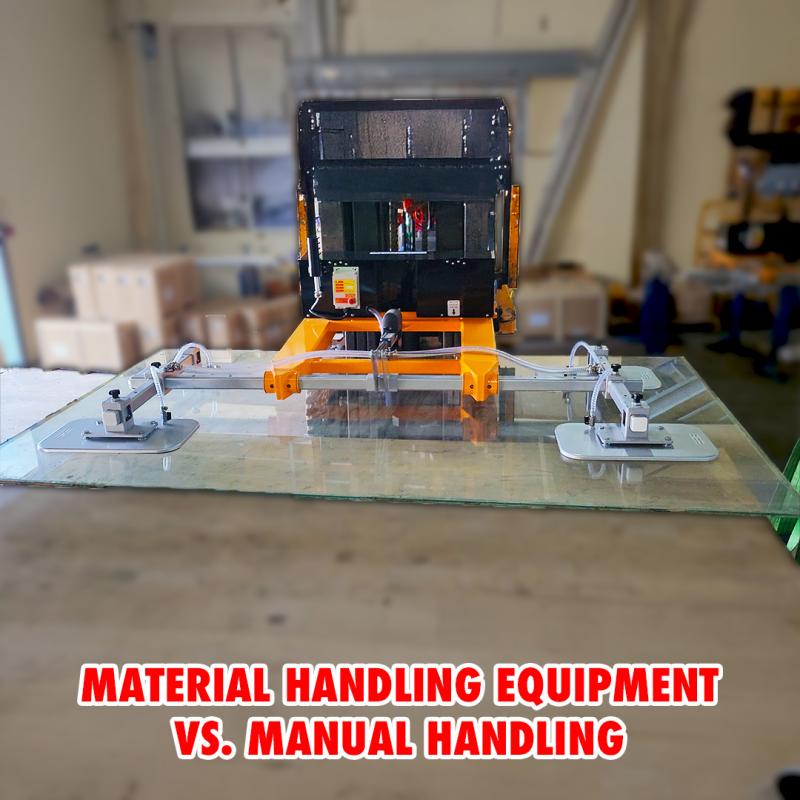



As companies scale operations, material handling equipment and material-handling equipment define efficiency, safety, and cost-effectiveness on the shop floor. From forklifts to gantry cranes, innovations in ergonomics and wearable sensor integration have redefined how goods are lifted, moved, and secured. In this article, we explore the latest material handling trends—covering lifting clamp, vacuum lifter slab lifter, scissor lifter, ratchet tie down traps, and gantry crane material handling—while detailing best practices for compliance and productivity.
The material handling industry is rapidly shifting from manual processes toward smart, connected systems. Automation, IoT integration, and data analytics empower material handling companies to optimize workflows, reduce workplace injuries, and lower operational costs.
Digital Transformation: Real-time tracking of pallets, racks, and cranes through RFID and cloud platforms.
Automation & Robotics: Collaborative robots replacing repetitive tasks, boosting throughput and safety.
Sustainability: Energy-efficient equipment and return-on-investment models highlighting ecological impact.
Consider a Practical Example of Material Handling where a warehouse implemented conveyor-guided lateral transfer systems, reducing manual lifts by 40% and slashing error rates.
Ergonomics in material handling focuses on minimizing strain and injury risk through equipment design and training.
Transport Frames: Features of Aardwolf Transport Frames offer adjustable forks and cushioned mounts, ensuring safe handling of irregular loads.
Slab Lifters:
The high-quality slab lifter integrates roller bearings to reduce friction and operator effort by up to 60%.
Scissor Clamp Lifters: Designed for versatility, these devices adapt to varying slab thicknesses, preventing off-center tilts.
Granite Stone Lifters: The Aardwolf Granite Stone Lifter features a serrated clamping mechanism, enhancing grip on polished surfaces.
Block Lifting Clamps: Learn how handle block lifts streamline cut-to-size workflows in quarries.
Glass Lifter Attachments: A glass lifter attachment with multi-cup suction reduces breakage and operator strain.
Integrating wearables into material handling elevates safety through real-time monitoring and predictive analytics.
Wearable sensors—accelerometers, gyroscopes, and heart-rate monitors—track posture, movement speed, and fatigue. By analyzing this data, companies can implement instant alerts for unsafe lifting techniques and adjust workloads dynamically.
Artificial intelligence processes vast sensor datasets to forecast injury risks. Patterns of overexertion or repetitive strain trigger preventive interventions—reducing musculoskeletal complaints by up to 30%.
Adhering to safety standards isn’t just mandatory; it’s a competitive advantage. Proactive compliance lowers liability and enhances workforce morale.
Jib Cranes: Ensure your jib cranes are maintained in excellent conditionthrough scheduled inspections, load-test certifications, and lubrication routines.
Ratchet Straps: Implement comprehensive ratchet strap solutions training, covering inspection for fraying, correct tensioning, and secure hook engagement.
Comparing mechanized systems to manual handling: Material Handling Equipment vs. Manual Handling: Cost & Safety Analysis
reveals ROI in equipment payback within 12–18 months, alongside a 25% reduction in injury-related downtime.
New technologies are reshaping lifting equipment and elevating operational performance.
Gantry Cranes: A robust gantry crane portable model offers flexible height adjustment and minimal foundation requirements.
Vacuum Lifters: The vacuum lifting is versatile for non-porous slabs—ideal for glass, metal, and engineered stone.
Forklift Booms:
Deploy Forklift Boom Extension attachments to reach deeper into racking systems without compromising stability.
Heavy-Duty Material Handling Solutions: Discover Heavy-Duty Material Handling Solutions tailored for mining, steel, and bulk-handling applications.
Advanced Material Handling Solutions: Explore Advanced Material Handling Solutions that integrate digital twins, automated guided vehicles (AGVs), and IoT controls.
Stone processing demands precision and safety—innovations here influence adjacent sectors.
Transport Frames: Stone Industry Innovations describe lightweight, recyclable steel frames reducing carbon footprint.
Safe Stone Movement: Review The transportation of stone materials for best practices in securing slabs during transit.
Choosing reputable material handling companies and qualified fabricators ensures seamless integration and support.
Advancements in material handling—from ergonomic lifting equipment and smart wearables to AI-driven analytics—are drastically improving workplace safety, productivity, and regulatory compliance. By investing in best-in-class tools and partnering with trusted material handling companies, organizations can achieve measurable ROI, reduce injury rates, and drive operational excellence.
Sign up to receive the latest info on new Aardwolf products, special offers and more.
By signing up you agree to receive emails from Aardwolf with news, special offers, promotions and other information. You can unsubscribe at any time.